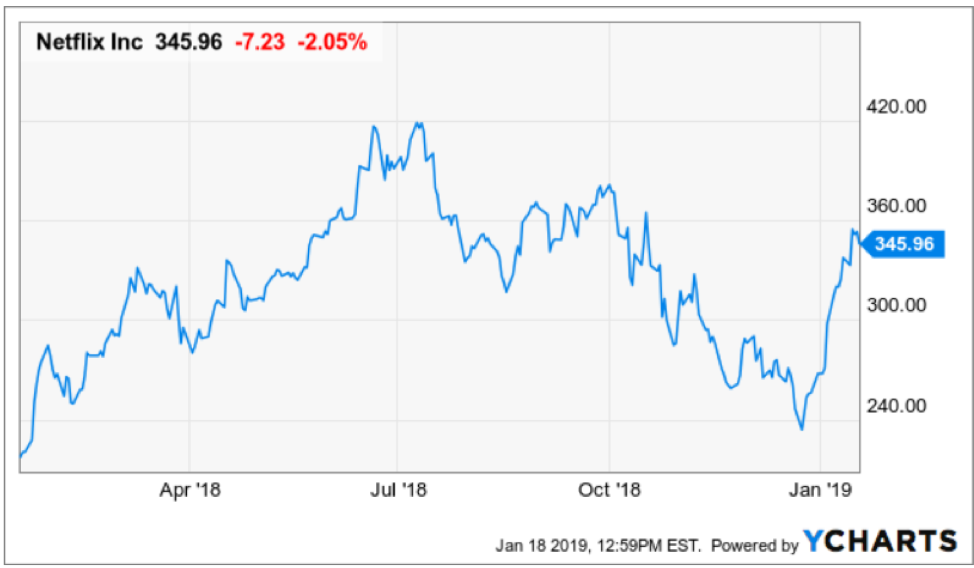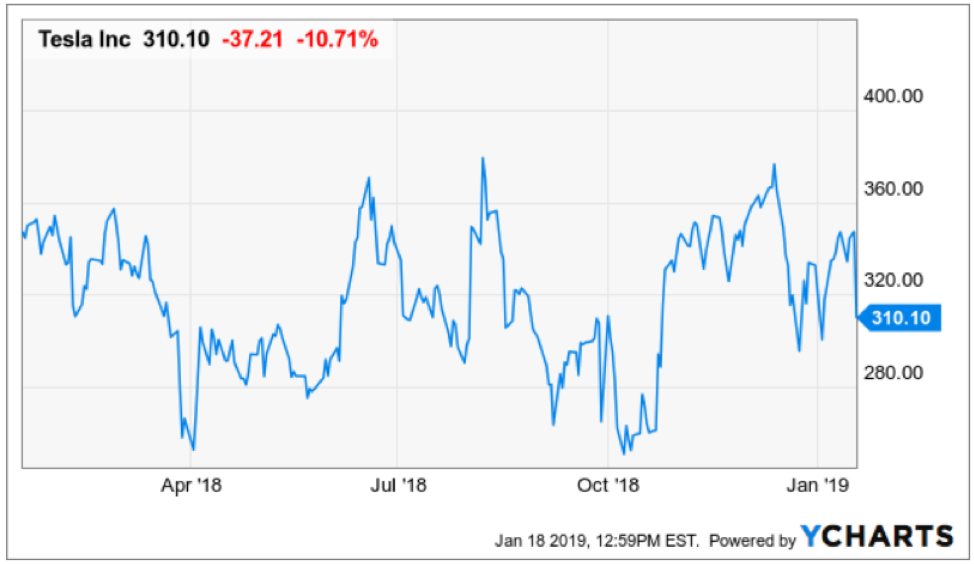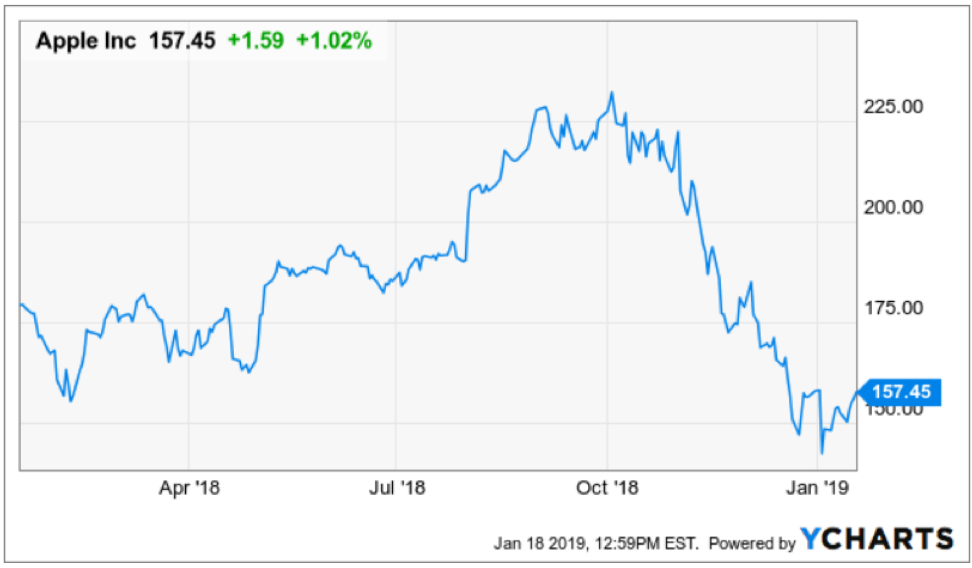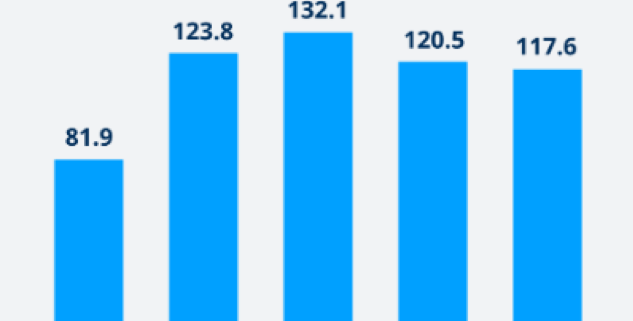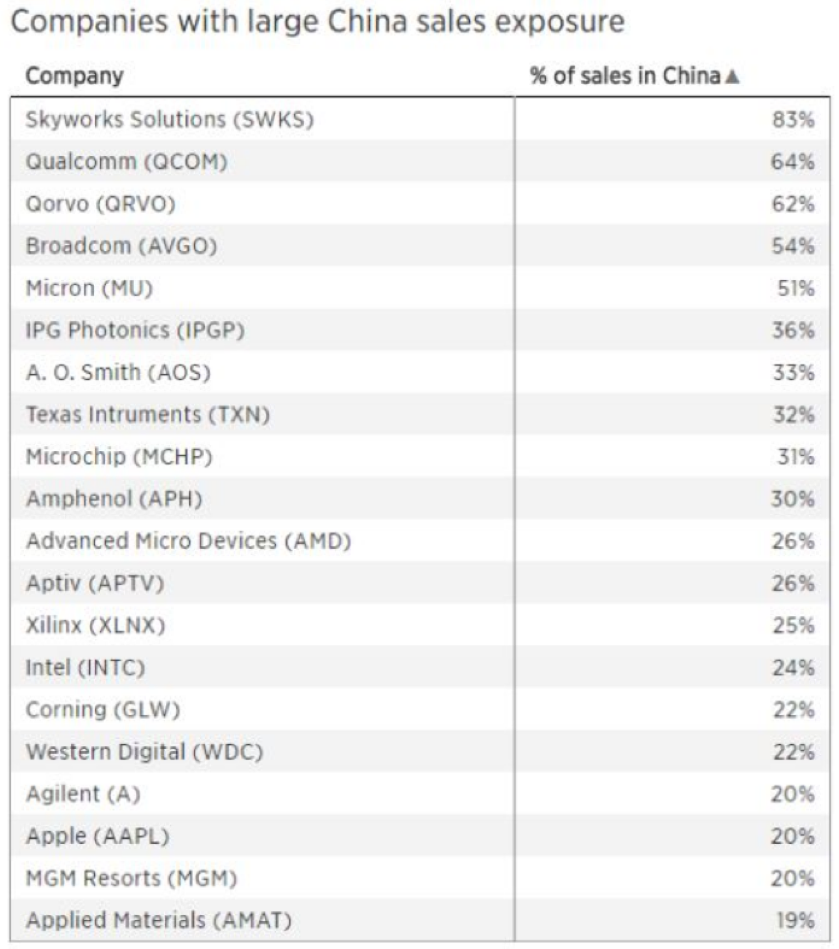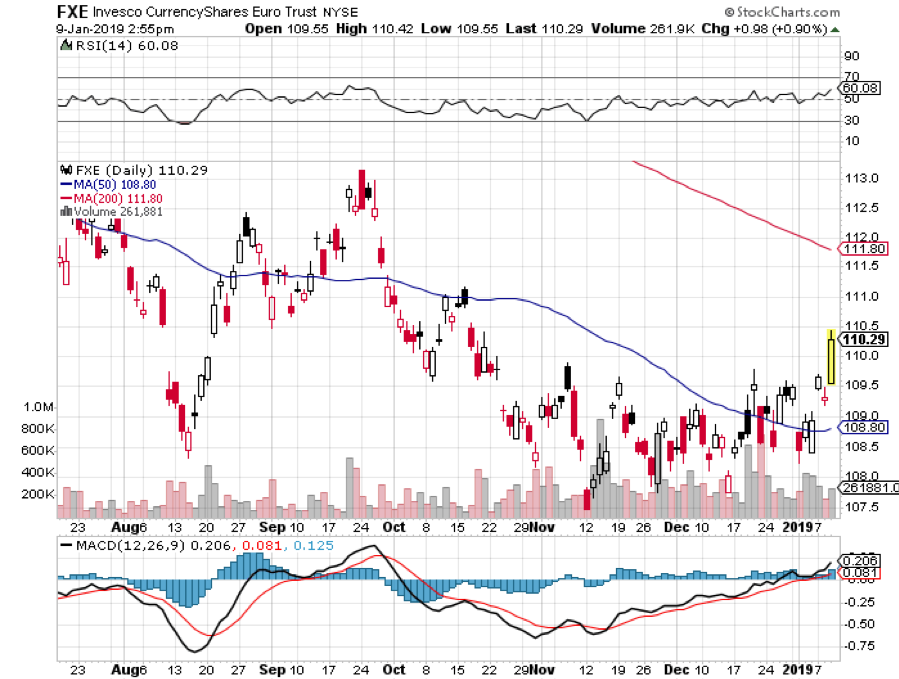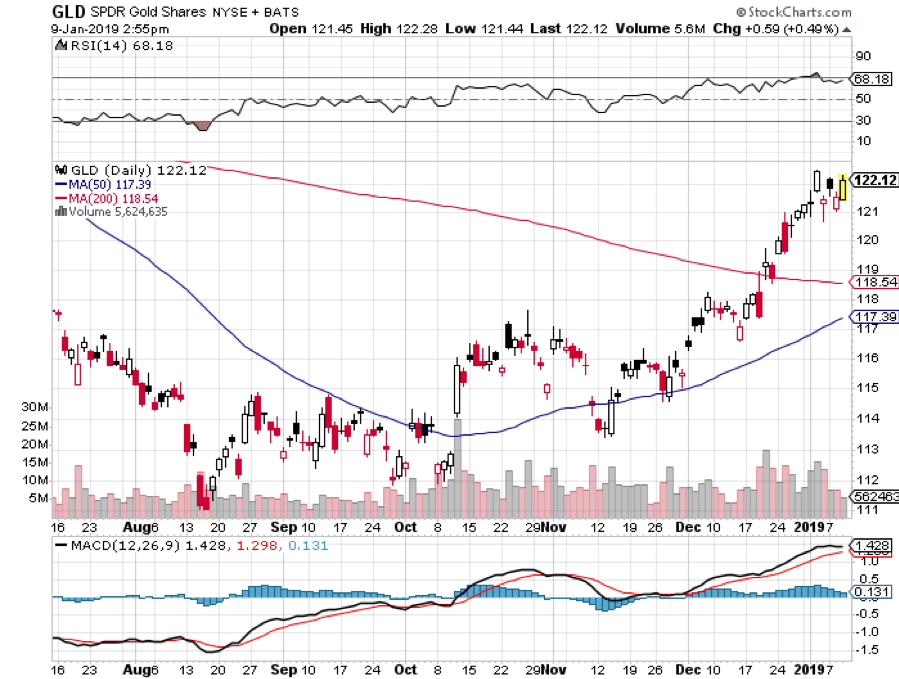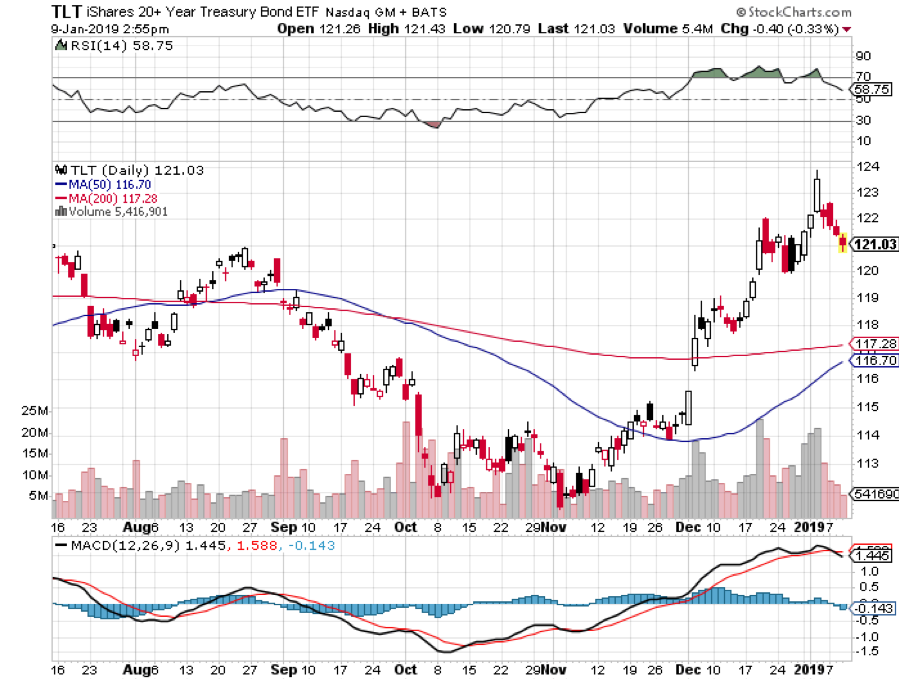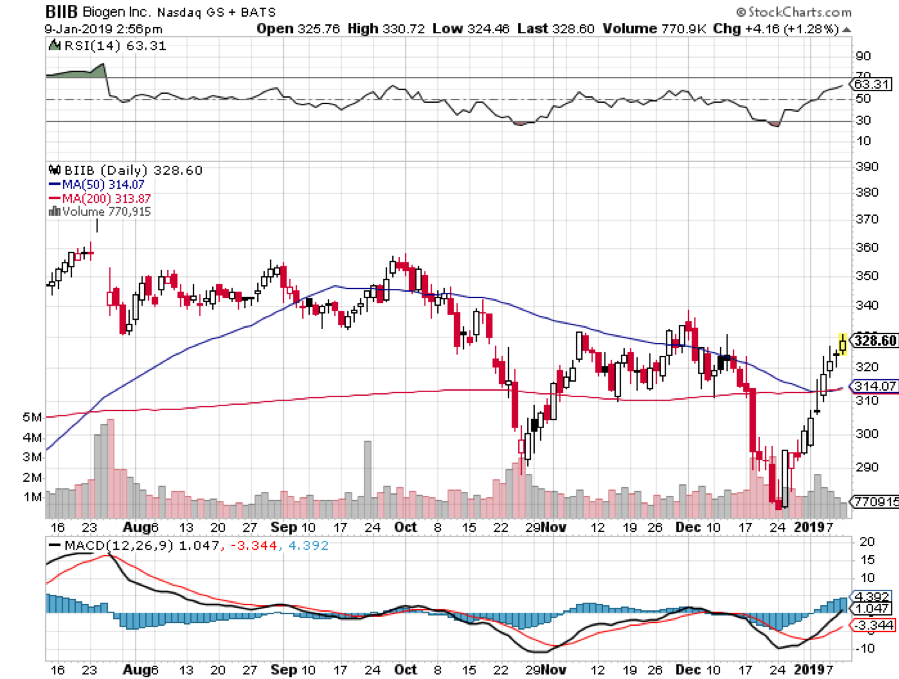In the past week, the tech sector has received information allowing investors to sketch a concise roadmap of what to expect in the tech sector for the rest of 2019.
One – the bull story in technology isn’t dead and the December sell-off in tech growth stocks was overdone.
Two – the path to tech profits is filled with more booby traps than in year’s past.
Three – the migration to digital is becoming more pronounced by the millisecond.
If you go back about a month ago when tech stocks were at their trough, traders were pricing in about a 60% chance of a recession in 2019 or early 2020 and the data didn’t support it.
What people were confusing themselves with was slowing growth instead of a lack of growth.
Then we got the disastrous news from Apple (AAPL) indicating business in China was petering out forcing them to change tactics cutting iPhone prices.
The tech market went into full-on panic mode and the revelation of weak China data did not help either.
Netflix (NFLX) reported and the online streaming app offered some respite with outperforming growth numbers.
Netflix has been a favorite of the Mad Hedge Technology Letter since its inception but the caveat with Founder and CEO of Netflix Reed Hastings brainchild is that the extreme volatility makes it difficult to trade around on a short-term basis.
The stock is up 50% from its nadir and its growth story is solid and will perpetuate.
The next bastion of juiced-up growth for Netflix is the international audience and these numbers are examined closely with a fine-tooth comb by investors attempting to understand the direction of the company.
The company audaciously added 8.8 million in new international subscribers last quarter which handily beat the 7.6 million estimates by 1.2 million.
Netflix also announced a few days earlier that it would raise the price of a monthly subscription between 13%-18%, and investors treated the news with celebratory shots of tequila.
It has been consensus for years that Netflix was severely underpricing their premium content, and analysts have been screaming and kicking trying to get Hastings to push up their monthly prices.
The price hike coincides with a year where I believe Netflix can grow revenue over 30%.
The mix of these two developments illuminate a few things about Netflix.
Netflix has the content that consumers want and even if competition rears its ugly head, they aren’t even in the same ballpark in terms of breadth and potency of content.
They are the king of contents and I don’t see anyone knocking them off their elevated perch in 2019.
In many ways, the Netflix long-term thesis mirrors the tech industry’s long-term thesis emphasizing supercharged growth by any means possible.
Even though this strategy is risky, it is working for Netflix and the capital isn’t drying up to go after the best content producers money can buy.
This earnings report should put to rest the growth warning sirens for now, tech will grow this year, but earnings results will be more of a mixed bag with the occasional miss.
This is in stark comparison to early 2018 where every tech company and their mother were scorching earnings forecasts by a magnitude of two or three.
Last September, the tech market looked above its head and saw a few boulders about to crush the herd, but investors shrugged it off.
As we move forward, the tech sector and the overall market is inching closer to a recession.
The low-hanging fruit has been pocketed and incremental gains aren’t no-brainers anymore – this can be gleaned from Tesla (TSLA) curtailing their workforce by 7%.
This news was delivered by a letter from CEO of Tesla Elon Musk noting that these decisions have been made with the goal of “increasing the Model 3 production rate and making many manufacturing engineering improvements in the coming months.”
Basically, Musk has telegraphed that staff needs to perform better, identify efficiencies that will save costs which in turn will boost profit margins.
This doesn’t mean that the era of tech growth is over, but this signals that tech companies are becoming more fidgety about loss-making operations and have ultimately targeted profits which shout at investors' late-cycle economics.
Musk needs to turn Tesla into a perennial profit machine to prove naysayers wrong, and now is the time to turn the page and max out his rocket fuel.
If the recession hits, investors could turn against Tesla and capital could dry up.
This newfound modesty towards the e-car business model is, in no doubt, exacerbated by the ratcheting up of fierce competition from the traditional automobile makers.
Tesla is in the e-car lead for battery technology, revolutionary production processes, and have a treasure trove of data that German companies would do anything to get their hands on.
Musk knows Tesla has fought this hard to get to this point, and he'd rather have the ball in his hands with 10 seconds left and a tie game just like Michael Jordan of the Chicago Bulls did.
Shaving off the excess has meant removing the customer referral program that was too costly that included benefits like half a year of free charging.
Part of this also has to do with Tesla losing their tax credit at the end of the year as well as giving more impetus to trimming costs.
Becoming a mass-market car manufacturer means it is important to price the car at affordable price points and that will be extremely difficult.
The goal is to deliver a $35,000 e-car that performs comparably to the rest of the fleet but produced with 7% less hands.
Can Musk do it?
I wouldn’t bet against him.
Musk means business and is hellbent for revenge against his arch enemies – the Tesla short community who he has habitually dragged under the bus through the media.
Piggybacking on this tougher profit-making climate is Boston-based finance company State Street Corporation’s (STT) announcement reducing headcount by 1,500 amounting to 6% of the global workforce.
The firm cited the urgent need to automate processes that will give the company a bigger foothold into the digital sphere.
The same theme was echoed at BlackRock Inc. (BLK), the world’s largest asset manager, who will eliminate 3% of its global workforce, or 500 people, amid an existential threat from the temporary ineffectiveness of passive investing.
In a rising market, it is guaranteed that assets at these types of funds almost always go up.
However, with an injection of recent volatility, passive investors have seen their balances dwindle with the market spawning abrupt outflows.
The need to zig and zag with the market is now painfully obvious and using technology to plug in the gaps will be cheaper and more appropriate for late cycle price action.
This is a suitable segue way into the third point – the fluid follow-through of the digital migration and the debacle of Sears prove my point.
Hedge fund manager Eddie Lampert and his firm ESL have navigated this famous American retailer into the ground.
This is what happens when the entire retail industry goes online when you don’t.
To make matters worse, Lampert has probably never set foot into his own investment.
Each time I roam the aisles of Sears, it’s about as crowded as a mortuary at midnight – an elementary story of a mismanaged enterprise.
Sears is an example of digital ignorance and it’s not the only one.
Gymboree Group, the baby clothing company, is another one to put on the list – the firm filed for Chapter 11 bankruptcy protection.
The company will close more than 800 Gymboree and Crazy 8 stores, this is the second time they have filed for bankruptcy protection in the past two years.
Unsurprisingly, the firm cited a sudden decrease in mall traffic and a surge in online alternatives as the reason for the economic softness.
The economy does not operate in a vacuum and any analog company who voluntarily misses the pivot to digital is voluntarily digging their own grave.
These three trends will only become more exaggerated moving forward threatening companies like Apple who fail to innovate after more than a decade of selling the same product, other companies don’t have the balance sheets to handle the same weakness.

